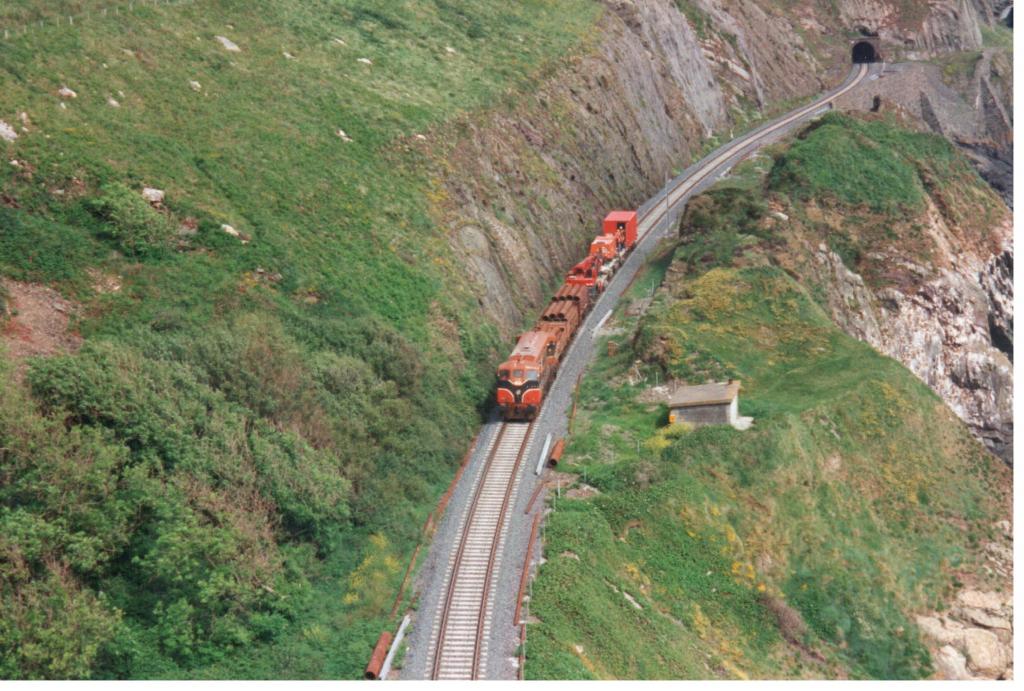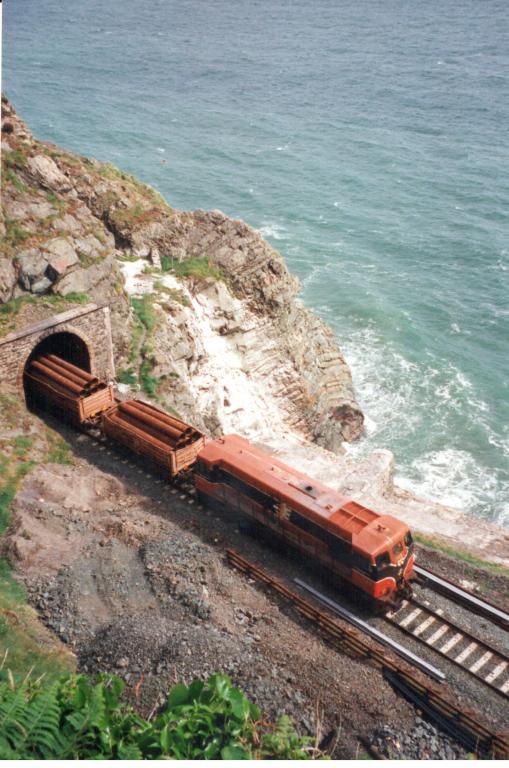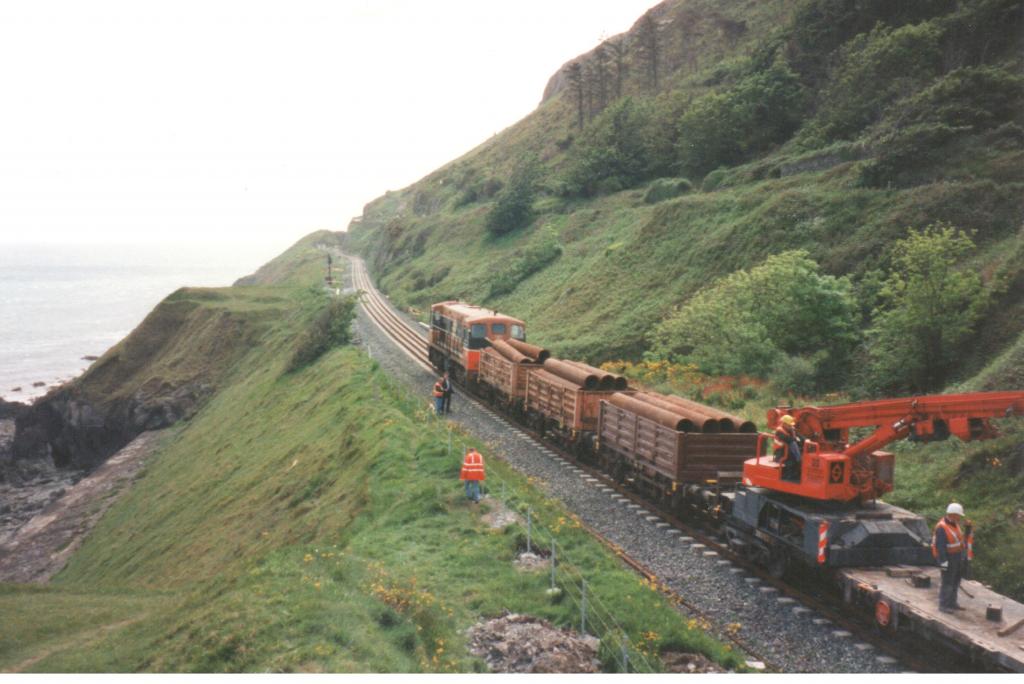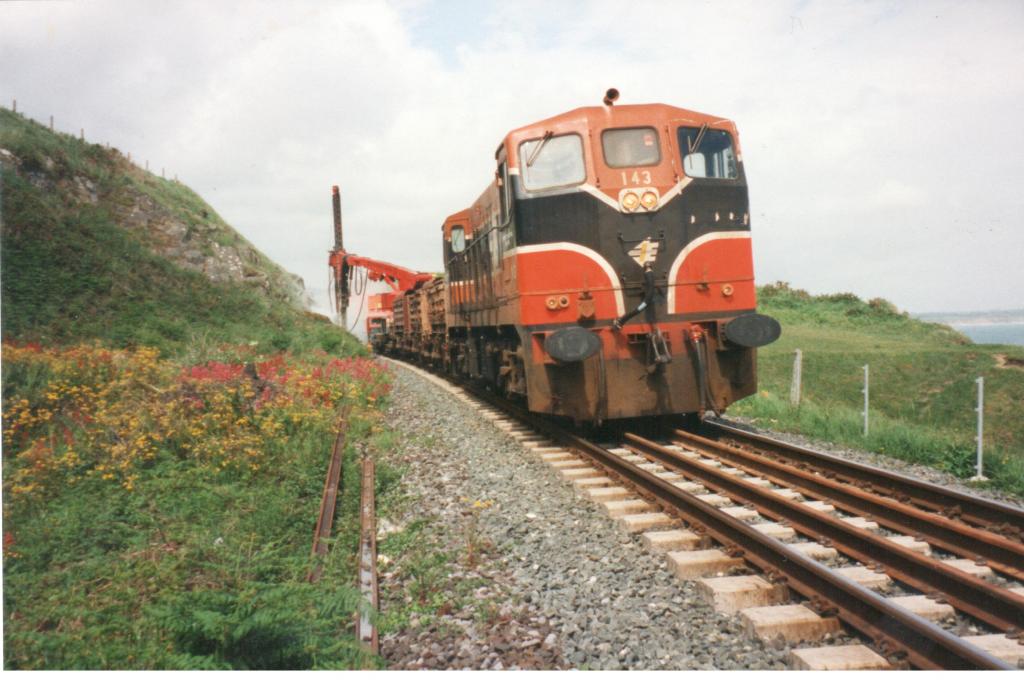-
Posts
1,037 -
Joined
-
Last visited
-
Days Won
5
Content Type
Profiles
Forums
Events
Gallery
Blogs
Store
Community Map
Everything posted by josefstadt
-
Scahalane built a cement depot as part of his stunning 'Kent Station' layout. Was it that one you were thinking of?
- 10 replies
-
- freight
- cement silo
-
(and 2 more)
Tagged with:
-
This was the first of a 3-part series, the other two parts being in Journals 151 and 152. As Rich says contact the IRRS. If you want to visit the Society, the library re-opens next Tuesday 2 September.
-
I wonder when this was written '... Stephen Aherne, the freight manager, is considering ways of making further wagons available.' He has not been Freight Manager for many years.
-
The current issue of Continental Modeller (September) has an interesting article on Eurotrack which is an international 'association of model railway clubs from across Europe'. The association includes 12 clubs from eight countries - Britain, France, Belgium, The Netherlands, Germany, Austria, Italy and Hungary. The article outlines the history of the association and sets out details of the standardised module adopted. I know that Eurotrack uses HO standards but the concept and practices might be of interest to OO modellers on this thread. The next Eurotrack exhibition is due to be held in Southampton on 20/21 September. The principal layout is due to be made up of some 44 modules totalling over 53m in length. See: http://solentmodelrailwaygroup.webs.com/ for information.
-
Seán, I don't think anybody produces these. Walthers has a kit called the 'Medusa Cement Company' but this includes eight silos and they don't look very like the Irish examples. Your best bet would probably be to scratch build your silo using a length of plastic pipe or a cardboard tube covered in thin plasticard. Check out these sites: and http://www.windsor-modular.com/tips-silos.php
- 10 replies
-
- freight
- cement silo
-
(and 2 more)
Tagged with:
-
Imagine the reaction of both Irish Rail and the Railway Safety Commission if it was even sugested !
-
In a way I'd agree Nelson. While it is nice to have a book on a shelf that one can take down and flick through without having to turn on the computer, there is now so much information about all aspects of this hobby available online that books are, I'm afraid, becoming superfluous. As Nelson says, forums such as this one provide a wealth of information and encouragement to budding modellers. Also, sites such as 'Everard Junction' with their tutorials actually show projects such as scenery construction, weathering etc being done and they explain the various pitfalls better than any book could.
-
It is indeed. The wagon No. is 25518 and it comes from the series 25436 - 25983. Introduced in 1966, these wagons had a 12' 0" wheelbase, weighed 8 tons and had a carrying capacity of 20 tons. They had instanter couplings, hand and vacuum brakes and were fitted with steel floors.
-
Kieran, the 24224-40 series rail trucks were indeed originally introduced without cranes. Doyle & Hirsch (1st ed) shows one of these wagons without the crane (p 74). However by the time D&H (2nd ed) was produced in 1981 the cranes had been fitted - the photo at the top of p 75 shows 24240 with cranes. The photo is a bit dark but the two cranes can just be made out. The wagons in Glenderg's photo above indeed look like conversions from coaching stock. NIR had three container wagons, 610-12, which were converted from ex-LMS NCC carriages, so it could be that they also converted withdrawn coaching stock for PWD use.
-
You must have eagle eyes to have spotted that! Another great video of a bygone era by fishplate7 - though technically it should be titled 'Down in the five foot in Maynooth'.
-
I wonder if this is a fault with the MIR kit? Have a look at Post #1 on Enniscorthyman's workbench. He has a photo of a completed MIR bogie container wagon and the box it came in. The illustration on the box shows the bogies close to the bufferbeams, whereas the model has them set well back, as you point out. Photos of bogie wagons seem to indicate that the illustration on the box is correct.
-
Great video GM. In cinematic terms I suppose it could be described as a horror movie! Apart from the ones in Inchicore, are (were) these the last of the MkIIIs?
-

New spoils in portlaoise
josefstadt replied to heirflick's topic in Photos & Videos of the Prototype
Correct Dave. Also, note the hoods fitted to cover the gap between the two boxes to prevent stones falling in there as well. Warbonnet's picture taken in Portarlington (see above post) shows the hood between two boxes, but the end hoods are not in evidence. -
This is one of two locomotives acquired by Luas construction contractor MVM Australia and which arrived in Dublin in December 2003 and January 2004. As Driver301 says, the locomotives had been built in 1960 by the French company B Richard of St Denis de L'Hotel for the French Military and were used in various depots around the country. They were fitted with a 54 hp Alsthom three-cylinder air-cooled diesel engine and had mechanical transmission. The locomotives were numbered ENG-5873-13-003 and ENG-5873-13-006 and each was used on the two original lines (Line A and Line B) during their construction phases. Once construction work was completed it would appear that the contractor 'gave' the locos to the RPA as it no longer required them. ENG-5873-13-006 was cosmetically restored and stationed outside the Red Cow depot building. The other locomotive, ENG-5873-13-003, was dumped and was soon heavily vandalised. It is not known what has happened to it in the interim. Externally, at least, the locomotives are identical to the Y2200 and Y2300 classes of shunting 'tracteurs' built for SNCF, so a model of one of these units could form a good basis for a model of one of the Luas units.
-
After the Legia Warsaw debacle, I hear that Oscar Pistorious has sacked his legal team and hired Celtic's - apparently you can lose both legs and win!
-
This is an example of the standard of what was produced. The originals were printed on foolscap paper (216 x 343 mm) so when scanning this had to be done in two parts - hence the vertical join line seen in parts of the centre of the diagram. The positions of the original east and west cabins can be seen along with the newer central cabin. Also shown is the WD&LR platform referred to by Eiretrains above.
-
Careful HF. If HID* reads that she'll might get the wrong idea! She'll think I'm like those spivs of old "Pssst, want to buy dirty postcards"!! I'll see what I can turn up. I'm slowly scanning some of my collection of prints and slides taken over the years. * HID Herself In Doors
-
HF, as far as I can remember mainline passenger and freight services operated normally (there weren't that many of either) and the DART works train came out between them. Indeed, shortly before the works train ventured out on the day I was there, 225 trundled past with the Up morning empty ammonia tanks - seen here exiting No. 2 Tunnel: For suburban services I think that peak services operated but off peak ones were probably cancelled. Again, compared to now, there wouldn't have been a great number of services.
-
No problem Dave. Happy to oblige. The pics were taken sometime around the June Public Holiday in 1998. Work on erecting the masts was undertaken between early May and mid-July of that year.
-
Fantastic site with a wealth of memorable images. Looking at the image of Lismore linked to in Eiretrains post above, the signal cabin looks a bit mundane when compared to the standard of the rest of the buildings. Originally there were two cabins at Lismore, one at either end of the station, but they seem to have been replaced by a single more central one, possibly as an economy measure, by 1905. I wonder if the original structures were more in keeping with the architecture of the rest of the station buildings. Back in 1970 the Transport Research Associates published a collection of track diagrams covering the Mallow-Rosslare Harbour line, along with the Fermoy-Mitchelstown, Ballinacourty, Grace Dieu Jct-Waterford South and Rosslare Strand-Wexford branches. Also included were a list of all the level crossings on the lines concerned, diagrams of gradients and curves and facsimiles of the relevant GS&WR Working Timetable pages dated 1 October 1906. All this information was available for the princely sum of 16 shillings (€1.02)! The diagrams were drawn by Herbert Richards and the publication is a mine of information, especially for anybody contemplating building a model based on this line. The IRRS probably has a copy of the publication.
-
Dave, here are some photos of the train working on Bray Head, close to where the cliff path crosses the line just above Naylor's Cove. The train consists of Loco 143 at the Greystones end, three 4-wheel wagons with half-height containers carrying steel tubes, a bogie wagon with the pile driver, a 4-wheel wagon with an air compressor and a bogie wagon with stores container and work area. The train propelled from Greystones to the work site, returning loco first after work was completed. The works train propelling backwards from Greystones is approaching No. 1 Tunnel. Note the steel tubes and OHLE masts laid out alongside the track. To the right of the current tunnel is Brunel's original 1855 Brabazon tunnel, abandoned in 1876. The rear wagon on the train, which is in the short open air section between No. 1 Tunnel (on the right) and OBR147A, carried a 20' container containing equipment for the drilling rig, and also had a work area. Behind the train are two of the footings for one of Brunel's wooden viaducts. The loco, 143, and two of the wagons with half height containers entering OBR147A. The train has arrived at the work site and the pile driver is being deployed. The notice on the cab side of 143 detailing its restriction to Per Way work in connection with DART extension projects. Despite this restriction the loco managed to 'escape' on a number of occasions and was noted shunting in Connolly and the North Wall A view from the Greystones end of the train with pile driving in progress. Close up view of the Schomburg Grundbau pile driver mounted on 42' 9" bogie flat wagon 30093. This was one of eight wagons (30091-8) fitted with floors for transporting steel traffic. Pile driving work in progress. The HIAB crane in Mayner's earlier post (#20) was used by the S&E Department for erecting signals and for off loading / recovering other equipment, e.g. location cases.
-
At a guess yes, but don't quote me on that HF! I got the data off the side of the loco during a private visit to see the railway many years ago. I couldn't find any reference as to when the loco was purchased by the army and whether they got it new or second-hand. I'll see if I can dig out any further info once the IRRS re-opens in Sept.
-
Probably better than Reichsmarks (or Punts)!
-
The loco was built by Motor Rail at the Simplex Works in Bedford, England. Patent applied for in 1926. The Works No. was 258537, but unfortunately I don't have a construction date.
.png.c363cdf5c3fb7955cd92a55eb6dbbae0.png)













